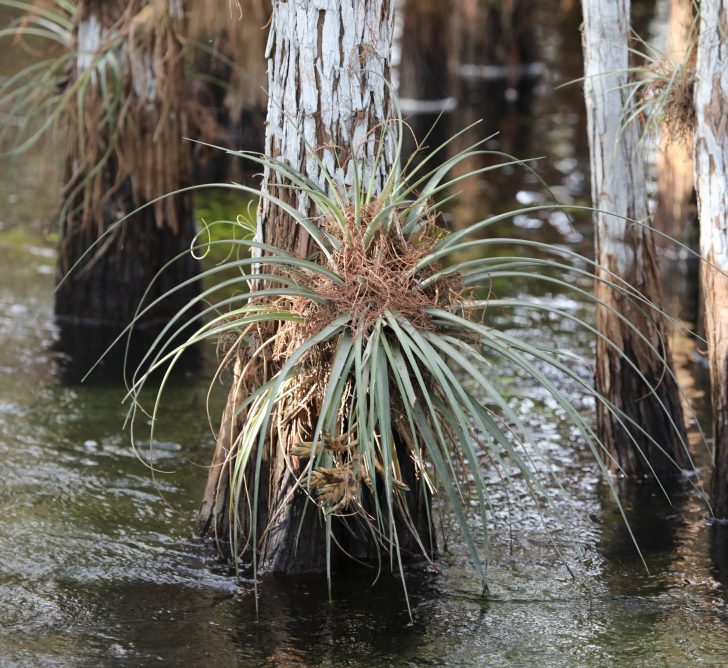Epiphytes are organisms that live or grow on other organisms. The difference between an epiphyte and a parasite is that the epiphyte has a commensal relationship with the host plant, meaning that it does no harm to the host organism. Plants, mildew, moss and lichens are examples of organisms that use other plants or animals for their benefit.
Down in the Everglades there are excellent examples of this unique relationship everywhere you look! Air Plants root themselves to cypress trees and other trees almost everywhere you look. The air plants and orchids stay high and dry above the flooded wetlands by holding onto the bark of other trees.
The epiphytes get water from rain, fog and the humid air. They get their nutrients from falling organic matter and some have unique relationships with algae or moss to get their nutrients. Many of the native air plants and orchids found in the Everglades are found nowhere else on Earth. The shrinking habitat of the Everglades range and water issues has hurt the populations and made many species endangered, but National Park protections have provided habitat to ensure their future.
Air plants and orchids put out flowers just like terrestrial plants and the pollen is what helps spread the species. A few plants like the Potbelly Air Plant grow in clusters which helps ensure future generations. Some great places to see large numbers of epiphytes are the Big Cypress Nature Preserve and the recreation areas as you approach Flamingo Campground at the southern-most point of the Florida peninsula. My recommendations are Pa-Hay-Okee Lookout Tower and Mahogany Hammock down near Flamingo. Get down there for yourselves and see this amazing Florida treasure!

